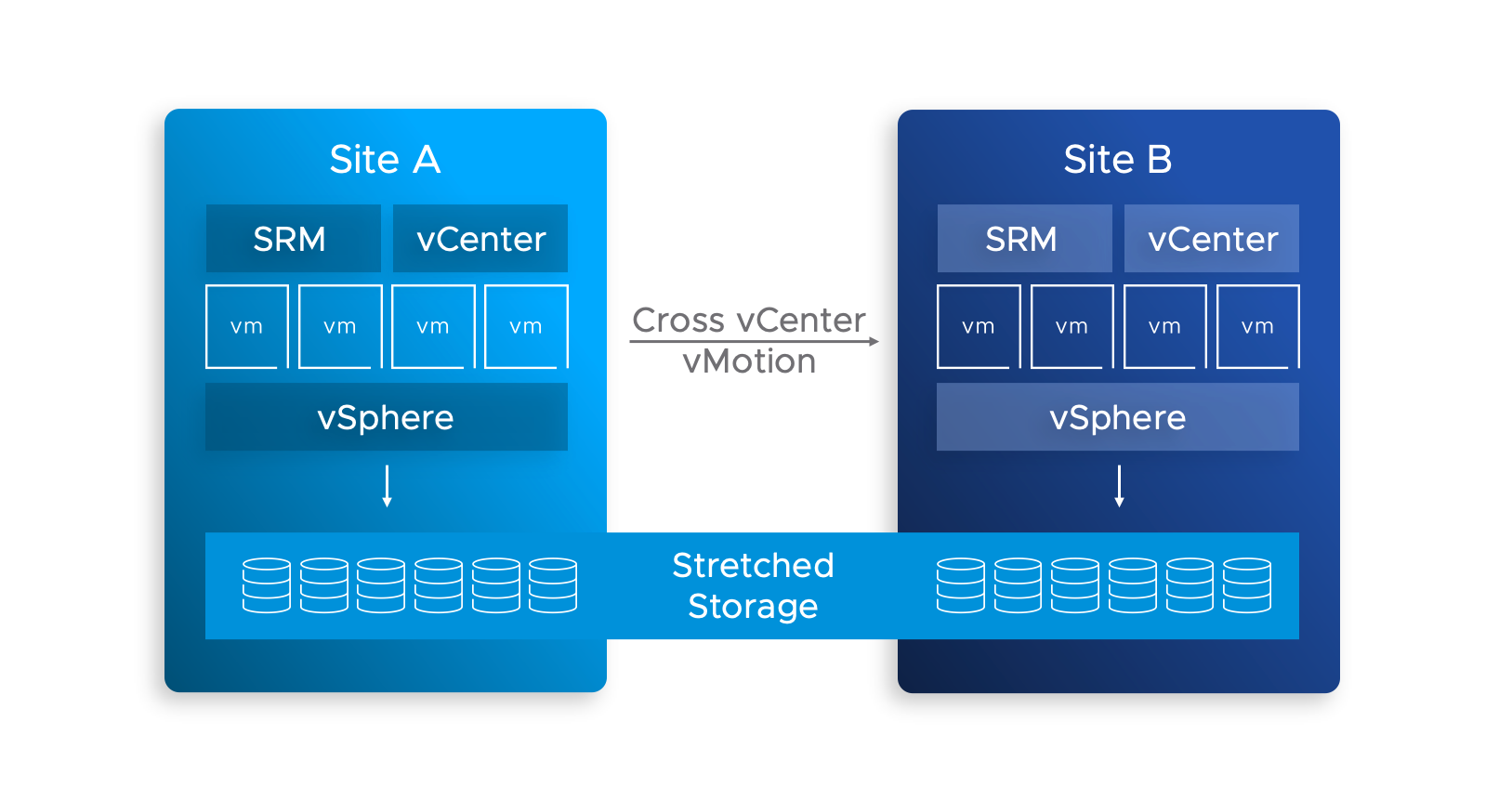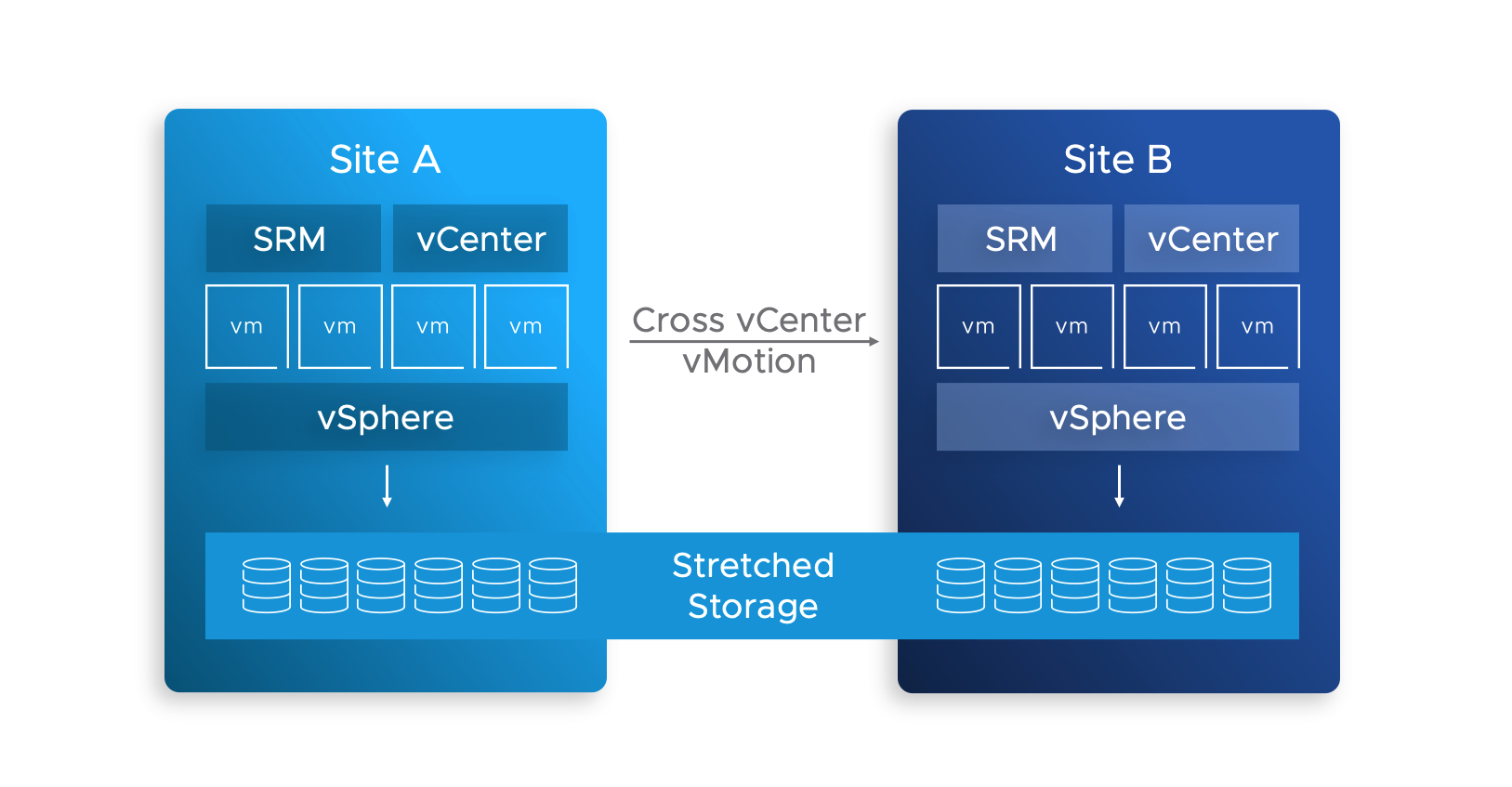What's new with Site Recovery Manager and vSphere Replication 8.5

What's New in SRM and vSphere Replication 8.5
VMware announced new versions of vSphere (with lots of incredible new capabilities in vLCM and core storage), vSAN, and more, so that means it's time for updates to Site Recovery Manager and vSphere Replication as well! In SRM and vSphere Replication 8.5, there are enhancements to zero downtime mobility, automatic protection, security, visibility, and more. Let's get into the details of what is available to download today.
Zero downtime mobility

Site Recovery Manager 6.1 introduced the capability of SRM to integrate with stretched storage. SRM with stretched storage provided the benefits of stretched clusters (zero downtime migrations between sites) with the best of SRM (non-disruptive testing of recovery plans and orchestrated migrations and recovery).
SRM 6.1 also introduced the concept of Storage Policy-Based Protection Groups (SPPGs). SPPGs are dynamic protection groups that enable VMs to be automatically protected by SRM by associating a VM with a policy. SPPGs were a requirement of using stretched storage with SRM. SRM 8.3 added support for automatic VM protection without the need for using SPPGs.
SRM 8.5 adds support for stretched storage with regular VM protection groups, which, combined with the previously mentioned automatic protection feature, means that SRM 8.5 will be the last version of SRM supporting SPPGs.
VM protection group support for stretched storage adds some new capabilities and differences as well:
- Recovery plan test failovers now include compliance checks for vMotion compliance for all VMs on the stretched storage part of the consistency group. Regardless of if the VM is protected or not.
- Reverse mappings are now required. If reverse mappings are missing, the reprotect workflow will fail.
- During a planned migration, the recovery plan removes placeholder VMs. Removing placeholders isn't usually an issue but can become one if the recovery plan isn't successful in its first attempt and needs to be rerun.
Stretched storage integration with Site Recovery Manager requires SRM Enterprise licensing. The stretched storage capability doesn't have any specific requirements on particular versions of vCenter or vSphere (make sure to check the VMware interop matrix).
Automatic Unprotection and Moving VMs Between Protection Groups

Site Recovery Manager 8.3 added support for the ability to protect VMs automatically. By placing them onto a datastore that was part of an existing protection group, SRM would automatically add them to that protection group.
SRM now supports the ability to automatically unprotect VMs that are deleted or removed from a protected datastore. SRM also supports the ability to move VMs between protection groups. Automatic unprotection and migration support make managing and maintaining protection within SRM protected environments more effortless than ever.
To use automatic unprotection and migration requires configuring an SRM advanced setting. Changing an advanced setting ensures that customers understand the potential issues with enabling this feature. Note that this is a site setting. The setting must be configured at both the source and target to take effect at both. If a VM is accidentally or unintentionally migrated or deleted, SRM will throw an error when this feature is off. If a VM is accidentally or unintentionally migrated or deleted, SRM will not throw an error when this feature is on.
FIPS support for vSphere Replication
SRM 8.4 introduced support for FIPS (Federal Information Processing Standard). vSphere Replication 8.5 supports FIPS as well. Additionally, both the vROps management packs and vRO plug-ins for SRM and vSphere Replication now all support FIPS as well.
Updating storage policy for replicated VMs
This release resolved a long-standing issue with vSphere Replication related to storage policies. In previous releases, if a VM was configured for replication, and subsequently the storage policy was changed, the storage policy associated with the VM wouldn't change. In vSphere Replication 8.5, the storage policy change issue was corrected, and it now operates correctly.
SPPGs - deprecated planned for next release
With the addition of support for stretched storage for VM protection groups and automatic unprotection and migration of VMs, there is no longer a reason to maintain storage policy-based protection groups (SPPGs). The changes to VM protection groups mean that VM protection groups have all the capabilities of SPPGs. The next release of SRM will deprecate SPPGs as a result.
Site Recovery Manager available on Azure VMware Services (AVS) and Google Cloud VMware Engine (GCVE)
Just a reminder that SRM is now supported on AVS and GCVE. This is in addition to the existing support for VMware Site Recovery for VMware Cloud on AWS. This means that there are more options than ever for where to protect your VMs to. It also means that there are more ways to protect your environment and take advantage of using DR as an easily scalable target.
Conclusion
As you can see, even with a minor release, VMware engineering has done some fantastic work again. Let me know what you think or if you have any questions on Twitter.
Links
- Site Recovery Manager 8.5 Download page
- Site Recovery Manager 8.5 Release Notes
- vROps MP for SRM 8.5 Download page
- vROps MP for SRM 8.5 Release Notes
- vRO Plug-in for SRM 8.5 Download page
- vRO Plug-in for SRM 8.5 Release Notes
- vSphere Replication 8.5 Download page
- vSphere Replication 8.5 Release Notes
- vROps MP for vSphere Replication 8.5 Download page
- vROps MP for vSphere Replication 8.5 Release Notes
- vRO Plug-in for vSphere Replication 8.5 Download page
- vRO Plug-in for vSphere Replication 8.5 Release Notes

